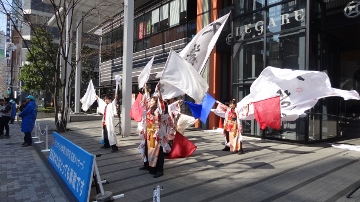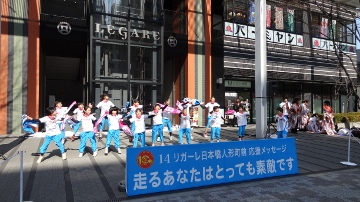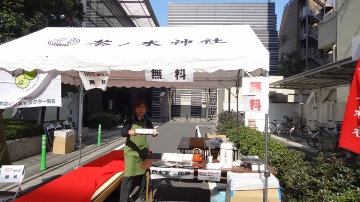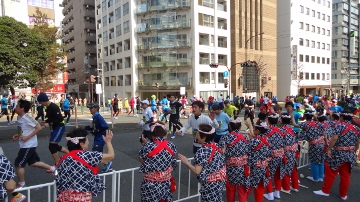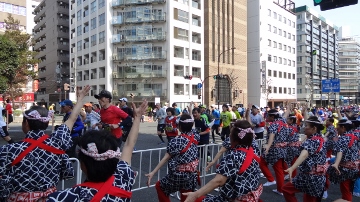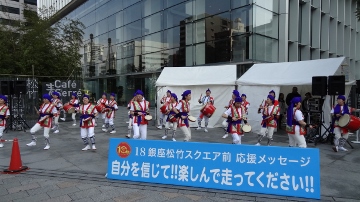The opposite bank of Kiyosu Bridge. The tall warehouse on the Koto-ku side was demolished and the sky became wider.
Depending on the location, you may be able to capture Kiyosu Bridge with the blue sky in the background. It looks like something will be built again, so now may be a chance.
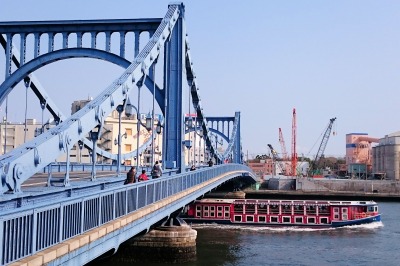
I wonder if it's going to get warm soon.
During the winter, the Sumida River Terrace, which was difficult to turn, is finally a fun season.
This area is slightly upstream of Kiyosu Bridge. The flowers that color the Sumida River terrace seem to have not been able to wait for spring.
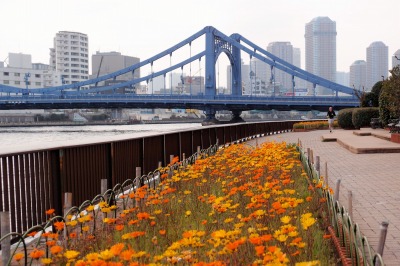
This kind of information board is often seen on the Sumida River Terrace.
Here, the river line is "curve". There is "Shinohashi" on the upstream side and "Kiyosu Bridge" on the downstream side, each of which spans the entrance of the curve.
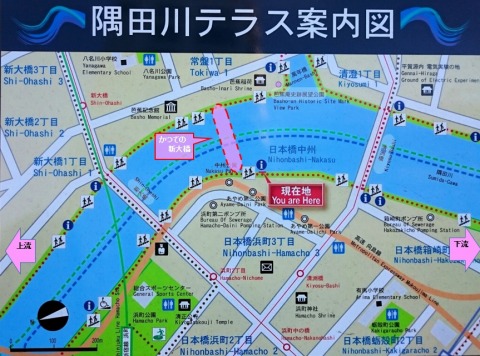 The top of the curve is where Shinohashi, the third place in the Sumida River during the Edo period, was located. It seems to have been rebuilt many times, but until about 100 years ago, a wooden bridge, two generations before the current bridge, was built here.
The top of the curve is where Shinohashi, the third place in the Sumida River during the Edo period, was located. It seems to have been rebuilt many times, but until about 100 years ago, a wooden bridge, two generations before the current bridge, was built here.
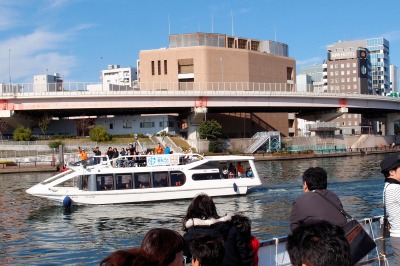 (The whole museum in Chuo-ku, 2015, the area where the former Shin-ohashi Bridge was built.)
(The whole museum in Chuo-ku, 2015, the area where the former Shin-ohashi Bridge was built.)
The inside of the curve is on the Chuo-ku side, but there is a place downstream from Shinohashi in the Edo period, and it was called "Nakasu" or "Mitsumata".
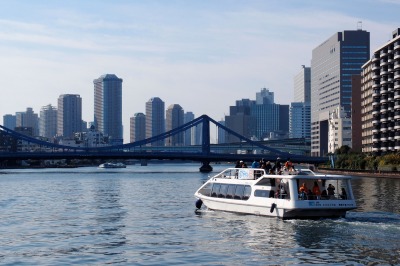
On the other hand, the opposite bank of the Sumida River is the Fukagawa district of Koto-ku. When Shin-ohashi Bridge was built for the first time in the Edo period, that "Matsuo Basho" was crowded.
It is said that in 1680, when the Ryogoku Bridge was built for the first time in the wake of the great fire of the Meiryaku era, and when the flowers of common people began to open, Basho moved to this area where the Onagi River merged with the Sumida River.
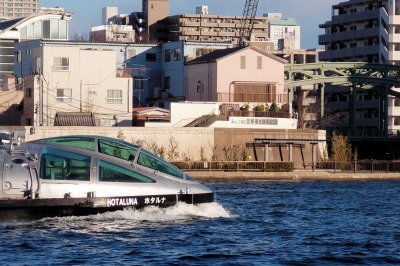 (Bashoan Historic Site Observation Park viewed from the Chuo-ku side)
(Bashoan Historic Site Observation Park viewed from the Chuo-ku side)
The "outside of the curve" where Basho lived.
Now from this place, facing the Chuo-ku side and looking at the river ...
On the upstream side is Shinohashi, the orange main tower, and far beyond Ryogoku Bridge.
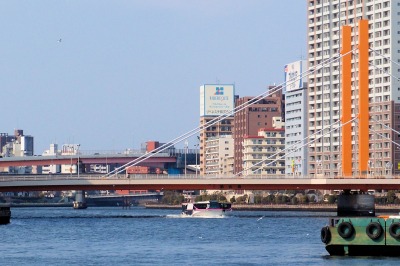 On the downstream side, there is a high main tower of the blue curve Kiyosu Bridge, and far beyond Chuo-ohashi Bridge.
On the downstream side, there is a high main tower of the blue curve Kiyosu Bridge, and far beyond Chuo-ohashi Bridge.
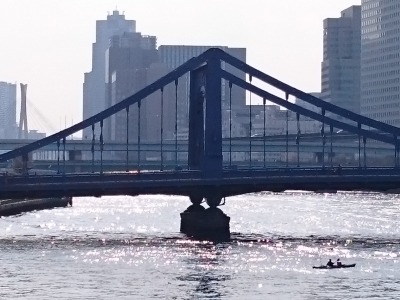 Thanks to the curve, the outlook is very good. You can see far beyond the river.
Thanks to the curve, the outlook is very good. You can see far beyond the river.
What did Basho look at here? You must have seen farther away than it is now ...
The mountain in Ueno, where cherry blossoms bloom upstream.
The boats of white sails come and go along the way.
Downstream is Tsukuda Island and the moon floating in the sea.
White Fuji far beyond Nihonbashi.
In one view of 180 degrees, such a landscape created by the curve should have spread.
"Is the flower cloud bell Ueno or Asakusa?"
"At night around the famous moons and ponds,"
I don't know much about how Basho chose this place because I don't study hard, but in later years, Hokusai and Hiroshige will draw Mount Fuji over the current Chuo-ku, so I can imagine that it was a scenic place.
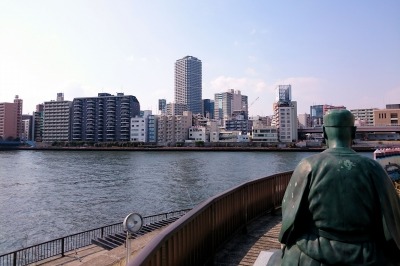
Basho also saw the Shin-ohashi Bridge being built. It is said that Basho was very pleased with the completion in 1694.
"On the first snow and over the bridge."
"Thank you, the frost of the bridge to step on."
A few years later, the Eitai Bridge will be built downstream. Fukagawa is in the process of development, and it may have been a place with fun dreams in the future.
The Chuo-ku side on the opposite bank was beyond Basho's gaze.
It must have been a special scenery where Basho could feel something. Now, when I stand on this place, I think there was such an era.
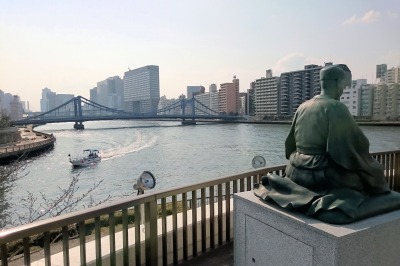
(The Basho statue overlooking the upper stream. In the evening, it automatically turns toward Kiyosu Bridge downstream. )
Around the former Shin-ohashi Bridge on the Chuo-ku side, there is a small park called Nakasu Park, which was built several years ago.
It's just a little up the stairs from the Sumida River Terrace, but the Koto-ku side on the opposite bank seen from this small place is not so tall.
It is quite pleasant to sit on a bench and look at the large sky and the boat traveling slowly along the curve.
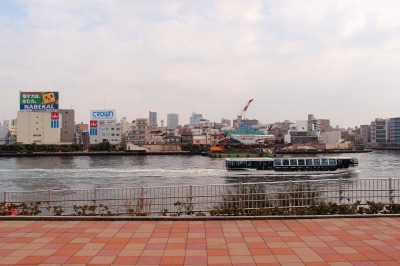
Hiroshige left Shin-ohashi Bridge seen from the Chuo-ku side in the Edo period in the work called "Ohashi Atake no Yudate". If you just drew it, the Sky Tree might be in the picture.
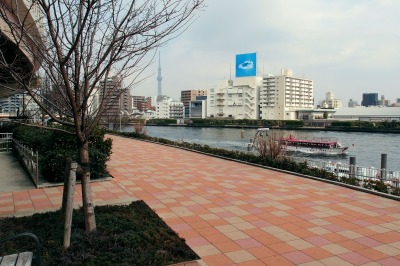
This park also has cherry blossoms.
If you want to take a break on the Sumida River Terrace, sit on a bench and look at the "Basho curve".
![]()
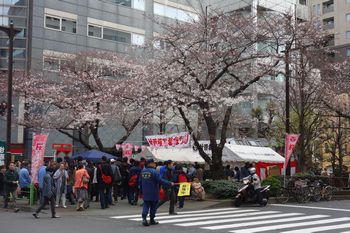
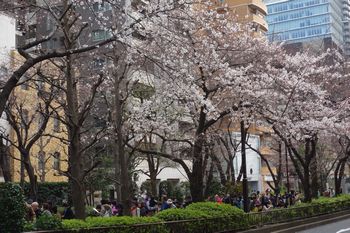
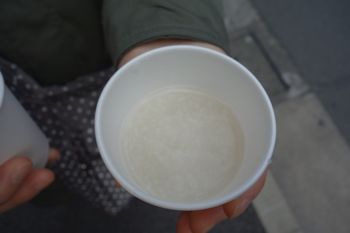
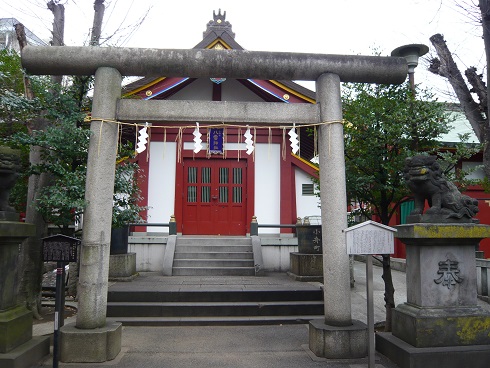
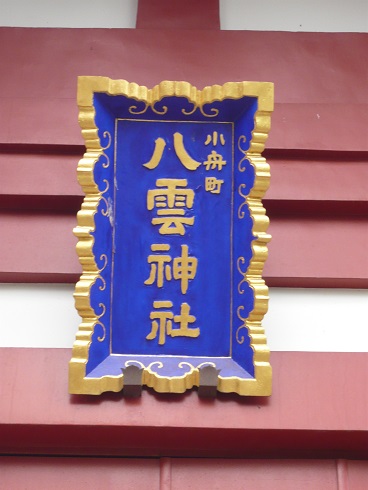
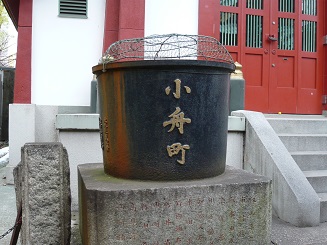
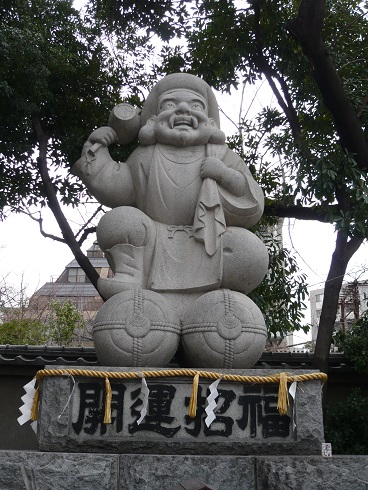
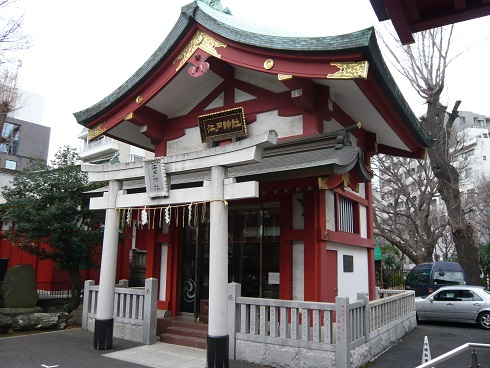
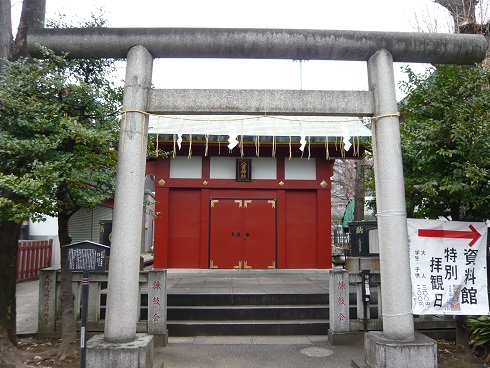
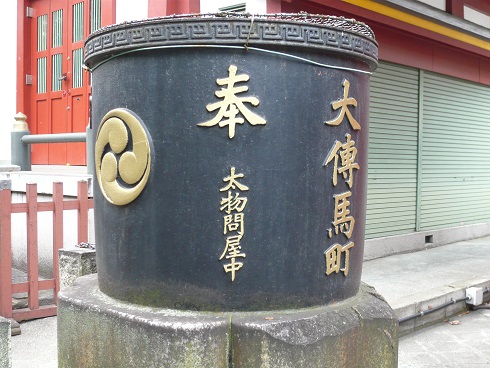


 The top of the curve is where Shinohashi, the third place in the Sumida River during the Edo period, was located. It seems to have been rebuilt many times, but until about 100 years ago, a wooden bridge, two generations before the current bridge, was built here.
The top of the curve is where Shinohashi, the third place in the Sumida River during the Edo period, was located. It seems to have been rebuilt many times, but until about 100 years ago, a wooden bridge, two generations before the current bridge, was built here. (The whole museum in Chuo-ku, 2015, the area where the former Shin-ohashi Bridge was built.)
(The whole museum in Chuo-ku, 2015, the area where the former Shin-ohashi Bridge was built.)
 (Bashoan Historic Site Observation Park viewed from the Chuo-ku side)
(Bashoan Historic Site Observation Park viewed from the Chuo-ku side) On the downstream side, there is a high main tower of the blue curve Kiyosu Bridge, and far beyond Chuo-ohashi Bridge.
On the downstream side, there is a high main tower of the blue curve Kiyosu Bridge, and far beyond Chuo-ohashi Bridge. Thanks to the curve, the outlook is very good. You can see far beyond the river.
Thanks to the curve, the outlook is very good. You can see far beyond the river.



